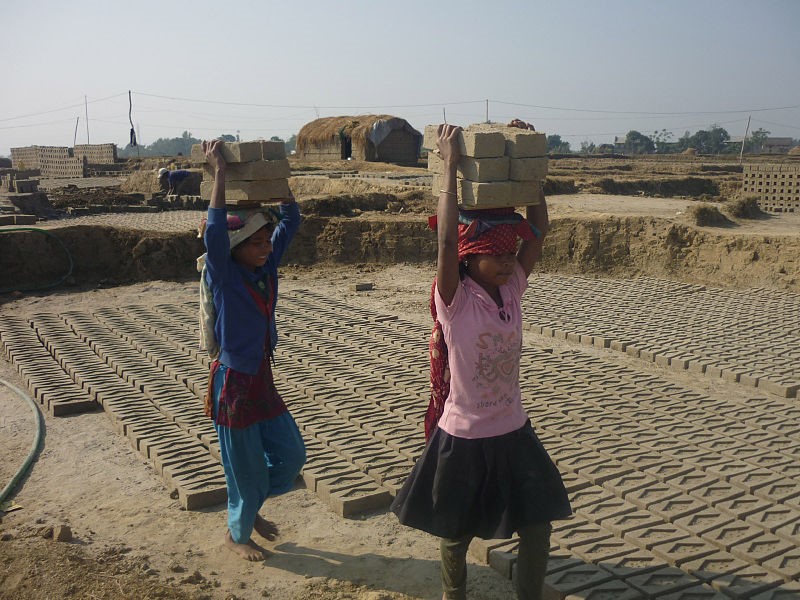A Special Report published in February 2018 by Gospel for Asia (GFA) revealed that more than 40 million people around the world are currently living in some form of slavery. The report added that 25 million of those are enslaved in Asia and the Pacific.
Seeking Justice and Defending Human Rights Wherever Poverty and Oppression Exist exposed several types of “modern-day slavery,” including mention of adults and children in South Asia entrapped as forced laborers in brick kilns.
Several news agencies across South Asia reported the rescue of 30 adults and 22 children between the ages of five to 13 from bondage at a brick kiln in Gujarat on January 1, 2019.
Our aim is to raise readers’ awareness of the magnitude of brick-kiln enslavement and how these poor people become entrapped.
The Magnitude Enslavement in Brick Kilns
There are an estimated 23 million workers enslaved in as many as 100,000 functioning brick kilns in Asia.
One-third of those enslaved are children who are forced to work an average of nine to 12 hours per day performing the worst form of child labor under international law.
Work is the priority. Education is not.
All brick molders come from marginalized families, communities, and social groups.
At least a third of all brick-kiln workers are paid less than India’s minimum wage which is equivalent to $0.28 an hour in U.S. dollars.
Workers at nearly 90% of the kilns have access to only polluted, untreated groundwater.
Men, women, and children live in filthy, cramped quarters.
How the Workers Become Trapped
Ankita’s story is typical. She and 13 other young women were taken from their village with the promise of employment. The 20-year-old and her friends were each promised 20,000 rupees as a ‘signing bonus’ of sorts, and a daily wage of 500 rupees. Instead, they were subjected to sexual and verbal abuse, confined to a small room, were ill-fed, and not allowed to move about freely.
It’s the old carrot and stick method of enlistment and motivation, but with a despicable twist.
Hoping to extricate themselves from poverty, they have willingly but unwittingly exacerbated their situations.
Anti-slavery International explains:
Workers are provided a loan before they start work, immediately going into debt. Then they are trapped in the kiln having to work for an entire season without being paid their wages, not knowing if they have worked off their debt or not. As no records are kept, at the end of the season the brick kiln owner often decides to pay less.
Brick kiln molders are paid per piece of brick made and usually as a family, rather than each worker paid individually per day or month, with only the male head of the family being paid, whilst women not getting get paid at all.
The rate paid per piece of brick made is often below the minimum wage, and well below what a worker would earn if they were paid minimum wages on a time-based system.
Article 24 of the Constitution specifically cites the employment of children in brick kilns as one of 65 industries in which children are prohibited from working.
The practices of bonded labor and employment of children in brick kilns are clearly unlawful. American Christians need to be aware of this despicable practice. And we need to pray for the rescue of these millions of men, women, and children.
Father, we bring these enslaved people before you. Please give them the strength to endure and a way to escape the bondage they are in. Show them your mercy and grace and bring them into your embrace. Amen.
To read more news on 21st Century Slavery on Missions Box, go here.
For more information about this, click here.
Sources:
- GFA Special Report, Seeking Justice and Defending Human Rights Wherever Poverty and Oppression Exist
- Devdiscourse, Human-trafficking survivors running from pillar to post demanding bill passage
- Anti-slavery, Appalling levels of slavery in India’s brick kilns
- Mirror Now News, District officials rescue 22 child laborers from brick kiln in Gujarat’s Vadeli village,
- Anti-slavery International Volunteers for Social Justice report, Slavery in India’s Brick Kilns & the Payment System
Image Source:
- Shresthakedar [CC BY-SA 4.0], from Wikimedia Commons





